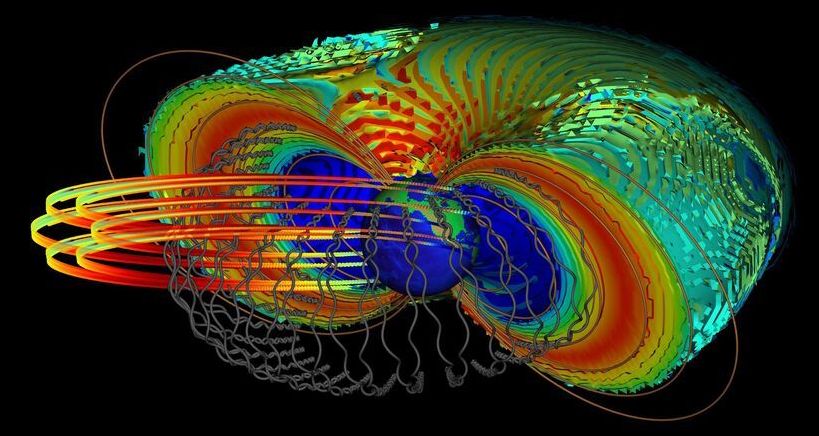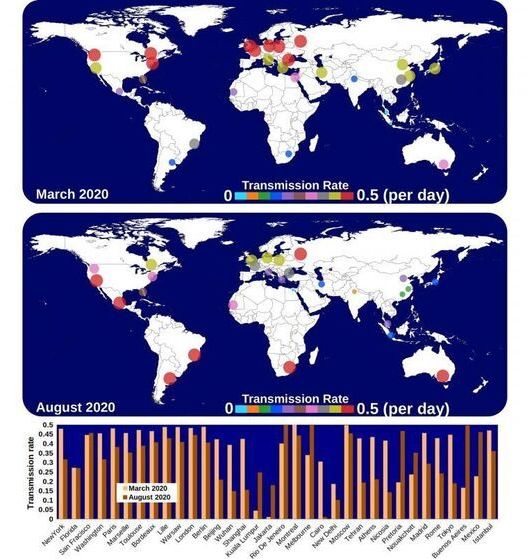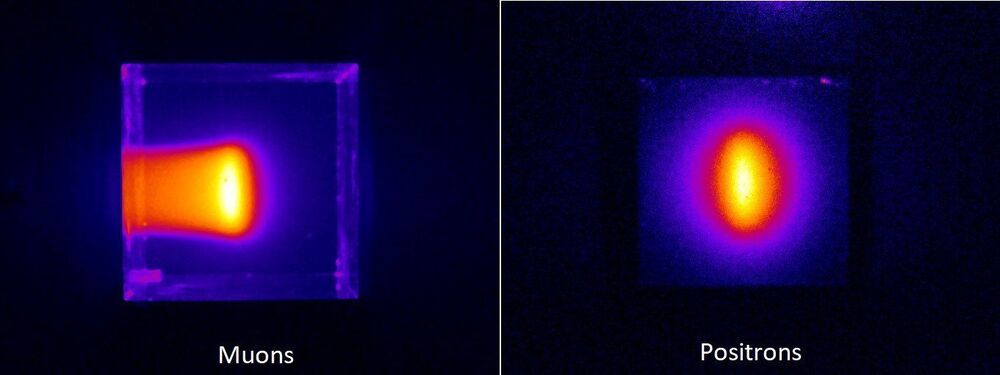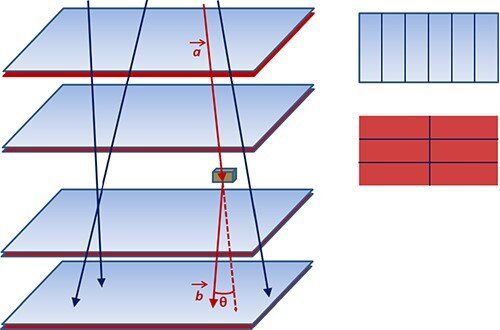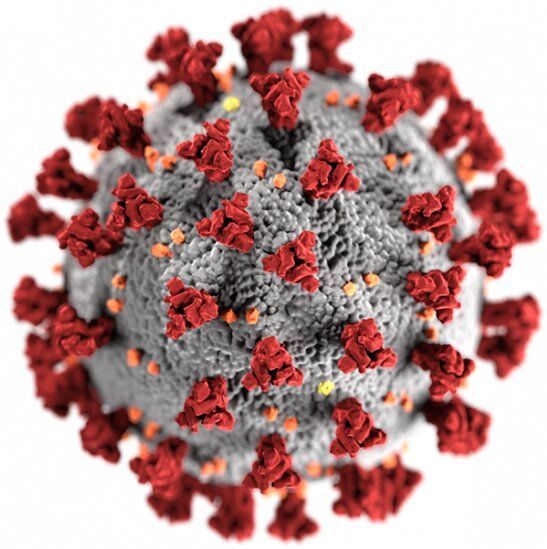A new study found that electrons can reach ultra-relativistic energies for very special conditions in the magnetosphere when space is devoid of plasma.
The ‘second wave’ of the coronavirus pandemic has resulted in much blame placed on a lack of appropriate safety measures. However, due to the impacts of weather, research suggests two outbreaks per year during a pandemic are inevitable.
First images of muon beams
Posted in particle physics
A new technique has taken the first images of muon particle beams. Nagoya University scientists designed the imaging technique with colleagues in Osaka University and KEK, Japan and describe it in the journal Scientific Reports. They plan to use it to assess the quality of these beams, which are being used more and more in advanced imaging applications.
Each year, billions of tons of goods are transported globally using cargo containers. Currently, there are concerns that this immense volume of traffic could be exploited to transport illicit nuclear materials, with little chance of detection. One promising approach to combating this issue is to measure how goods interact with charged particles named muons—which form naturally as cosmic rays interact with Earth’s atmosphere. Studies worldwide have now explored how this technique, named “muon tomography,” can be achieved through a variety of detection technologies and reconstruction algorithms. In this article of EPJ Plus, a team headed by Francesco Riggi at the University of Catania, Italy, build on these results to develop a full-scale muon tomograph prototype.
At 2 a.m. one night last April, Michael Schoof triple-checked the numbers on his screen, took a deep breath, and fired off an email he’d been waiting all day to send.
The Army is planning for a shoot-off to search for a long-range precision munition to give its future aviation fleet stand-off from enemy assets.
Possibly this will make covid-19 less severe and manageable.
Medicine developed at Ichilov moderates immune response, helps prevent deadly cytokine storm, researchers say; 29 of 30 phase 1 trial patients left hospital within 3–5 days.
The SARS-CoV-2 virus mutates fast. That’s a concern because these more transmissible variants of SARS-CoV-2 are now present in the U.S., U.K. and South Africa and other countries, and many people are wondering whether the current vaccines will protect the recipients from the virus. Furthermore, many question whether we will we be able to keep ahead of future variants of SARS-CoV-2, which will certainly arise.
In my laboratory I study the molecular structure of RNA viruses – like the one that causes COVID-19 – and how they replicate and multiply in the host. As the virus infects more people and the pandemic spreads, SARS-CoV-2 continues to evolve. This process of evolution is constant and it allows the virus to sample its environment and select changes that make it grow more efficiently. Thus, it is important to monitor viruses for such new mutations that could make them more deadly, more transmissible or both.
Denmark will build a wind-generating artificial Island. This green energy hub expected to supply 10GW.
The long-rumored island is expected to begin operations in 2033.
